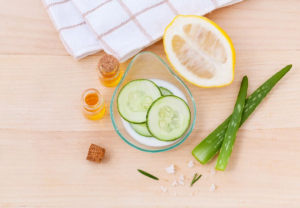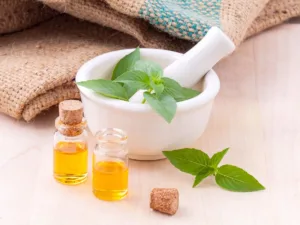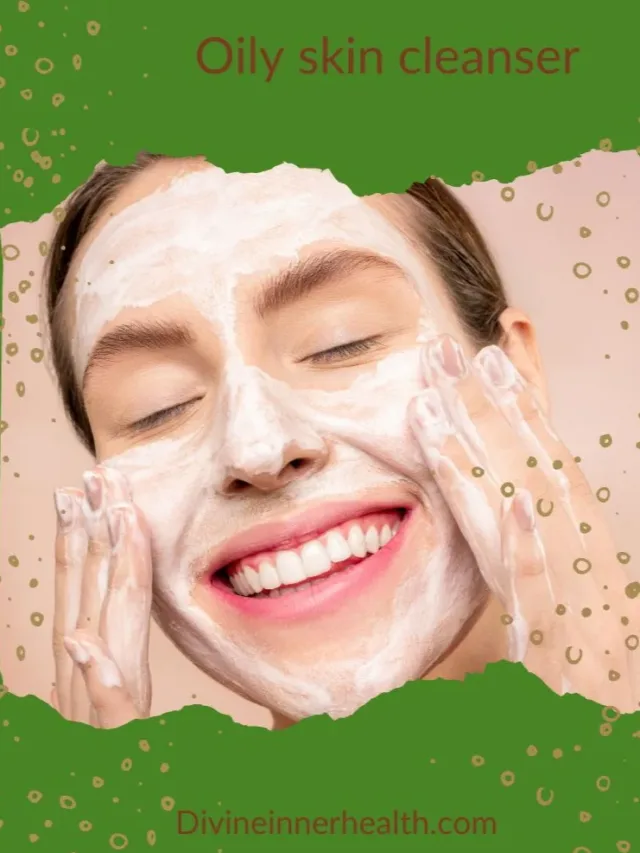Discover the ultimate guide to finding the perfect for oily skin cleanser! Say goodbye to excess oil and hello to a fresh, matte complexion .
Introduction
Dealing with Oily Skin Cleanser can be a challenge, but with the right skincare routine, you can achieve a balanced and healthy complexion. One essential step in this routine is using a specifically formulated for oily skin cleanser. While there are many commercial options available, making your own Oily Skin Cleanser at home allows you to customize the ingredients to suit your skin’s needs. In this blog post, we’ll explore how to create the best cleanser for oily skin using natural ingredients that are gentle yet effective.
Understanding Oily Skin:
Before diving into the recipe, it’s important to understand why oily skin occurs. Oily skin is often the result of overactive sebaceous glands, which produce excess oil, leading to a shiny complexion and clogged pores. By using the right ingredients in your Oily Skin Cleanser, you can help regulate oil production and keep your skin clear and balanced.
DIY oily skin cleanser Recipe:

Now, let’s get into the recipe for creating your own oily skin cleanser :
Ingredients:
1/4 cup witch hazel
2 tablespoons aloe vera gel
5-10 drops tea tree oil
1 teaspoon lemon juice (optional)
Instructions:
| Steps For DIY Cleanser Recipe: |
|---|
| 1) In a clean bowl, mix together the witch hazel and aloe vera gel until well combined. |
| 2) Add the tea tree oil and lemon juice (if using) to the mixture and stir thoroughly. |
| 3) Transfer the cleanser to a clean, airtight container for storage. |
| 4) To use, dampen your face with water and apply a small amount of the cleanser to your fingertips. |
| 5) Gently massage the cleanser onto your skin using circular motions, focusing on areas prone to excess oil. |
Tips for Using Homemade oily skin cleanser:
1)Perform a patch test before using the oily skin cleanser on your entire face to ensure you don’t have any adverse reactions to the ingredients.
2)Store the oily skin cleanser in a cool, dry place away from direct sunlight to prolong its shelf life.
Use the cleanser twice daily, in the morning and evening, as part of your skincare routine for best results.
Summery
With just a few simple ingredients, you can create a gentle yet effective oily skin cleanser right in the comfort of your own home. By incorporating natural ingredients like tea tree oil, witch hazel, and aloe vera gel, you can help control excess oil production and achieve a clearer, more balanced complexion. Say goodbye to shine and hello to healthy, radiant skin with this DIY cleanser recipe!
Everyday Ingredients for Oily Skin Cleanser
Transforming your skincare routine doesn’t always require fancy products – sometimes, the most surprising ingredients can work wonders. Here are some household items that can elevate your skincare game:
Key Ingredients for Oily Skin:
1. Tea Tree Oil:
Known for its antibacterial properties, tea tree oil helps to combat acne-causing bacteria and reduce inflammation.
2. Witch Hazel:
A natural astringent, witch hazel helps to tighten pores and control oil production.
3. Aloe Vera Gel:
Soothes and hydrates the skin without adding excess oil, making it ideal for oily skin types.
4. Lemon Juice:
Contains citric acid, which helps to exfoliate the skin and control oiliness.
5 .Honey:
This sweet nectar isn’t just for toast. It’s a natural humectant, meaning it locks moisture into your skin, leaving it soft and supple. You can use it as a hydrating face mask or mix it with sugar for a gentle exfoliator.
6. Oatmeal:
Perfect for soothing irritated skin, oatmeal has anti-inflammatory properties that can calm redness and itching. Create a DIY oatmeal mask by blending it into a fine powder and mixing it with water or yogurt.
7. Green Tea:
Rich in antioxidants, green tea can help fight signs of aging and reduce inflammation. Steep a bag in hot water, let it cool, then use it as a toner or soak cotton pads in it for a refreshing eye treatment.
8. Coconut Oil:
This multitasking marvel can be used as a moisturizer, makeup remover, or hair mask. Its fatty acids help nourish and hydrate the skin, but be cautious if you have oily or acne-prone skin, as it can be comedogenic for some.
9. Apple Cider Vinegar:
Diluted with water, apple cider vinegar makes an excellent toner, helping to balance the skin’s pH and combat acne-causing bacteria. Start with a very diluted mixture to avoid irritation.
Additional Tips:
1)Always patch test new ingredients on a small area of skin to check for any adverse reactions.
Use raw, unprocessed versions of these ingredients for maximum benefits.
2)Incorporate these household items into your skincare routine gradually to see how your skin reacts.
Customizing Homemade oily skin cleanser
Personalized skincare is all about addressing your skin’s specific needs, and when it comes to oily skin, finding the right oily skin cleanser is crucial. Here’s how to tailor homemade cleanser recipes for your oily skin:
1)Choose the Right Base:
Start with a gentle, non-comedogenic base for your cleanser. Options like castile soap, aloe vera gel, or honey are great choices for oily skin because they effectively cleanse without stripping away too much natural oil.
2)Incorporate Astringent Ingredients:
Oily skin often benefits from ingredients that help control excess oil production and tighten pores. Look for astringent ingredients like witch hazel, tea tree oil, or apple cider vinegar to incorporate into your cleanser recipe. These ingredients help remove excess oil and impurities while keeping your skin feeling fresh.
3)Add Exfoliating Agents:
Oily skin can be prone to clogged pores and dullness, so including exfoliating agents in your cleanser can help slough away dead skin cells and reveal a brighter complexion. Consider adding gentle exfoliants like ground oatmeal, sugar, or finely ground coffee to your homemade cleanser recipe.
4)Include Balancing Ingredients:
Balance is key when it comes to oily skin, so be sure to include ingredients that help regulate sebum production without over-drying your skin. Ingredients like kaolin clay, green tea extract, or activated charcoal can help absorb excess oil while maintaining the skin’s natural moisture barrier.
5)Experiment and Adjust:
Everyone’s skin is unique, so don’t be afraid to experiment with different ingredients and ratios until you find the perfect homemade cleanser recipe for your oily skin. Pay attention to how your skin responds and adjust your recipe as needed.
Tips:
1)Start with small batches when experimenting with homemade oily skin cleanser recipes to avoid waste.
2)Be cautious with essential oils, as they can be irritating to some individuals, especially when used undiluted.
3)Consistency is key – use your homemade oily skin cleanser regularly to see the best resultे.
Understanding Ingredients
Let’s dive into the science behind homemade oily skin cleanser by exploring key ingredients and their benefits:
1)Salicylic Acid:
This beta hydroxy acid (BHA) is a powerhouse ingredient for oily skin cleanser. It penetrates deep into pores, dissolving excess oil and dead skin cells that can lead to breakouts. It also has anti-inflammatory properties, making it effective against acne.
2)Tea Tree Oil:
Known for its antibacterial and antifungal properties, tea tree oil helps combat acne-causing bacteria on the skin’s surface. It also helps regulate oil production, making it a great addition to homemade oily skin cleanser.
3)Witch Hazel:
Witch hazel is a natural astringent that helps tighten pores and reduce excess oil production. It also has anti-inflammatory properties, soothing irritated skin and preventing breakouts.
4)Clay:
Clay, such as kaolin or bentonite, is excellent for absorbing excess oil and impurities from the skin. It helps to unclog pores, reduce shine, and leave the skin feeling clean and refreshed.
5)Apple Cider Vinegar:
Apple cider vinegar contains acetic acid, which helps regulate the skin’s pH levels and control oil production. It also has antibacterial properties that can help prevent acne breakouts.
By understanding the role of these key ingredients, you can make informed choices when creating homemade oily skin cleanser. Experimenting with different combinations and concentrations of these ingredients can help you find the perfect formula for your skin’s needs.
Remember, skincare is not one-size-fits-all, so it’s essential to pay attention to how your skin responds to different ingredients and adjust your routine accordingly. With a little knowledge and experimentation, you can achieve healthy, balanced skin that glows from within.
Oily Skin Cleanser Combinations:
Pairing Homemade Recipes with Other Skincare Practices for Oily Skin

Elevating your skincare routine involves more than just using one product – it’s about combining complementary practices to supercharge your results. Here’s how you can enhance homemade cleansers with other skincare practices:
1)Double Cleansing:
Start by using your homemade oily skin cleanser to remove makeup, dirt, and excess oil from the surface of your skin. Follow up with a gentle, water-based cleanser to deeply cleanse pores and ensure all impurities are removed. Double cleansing can help prevent breakouts and improve the effectiveness of your skincare routine.
2)Exfoliation:
Incorporate exfoliation into your skincare routine 1-3 times a week to slough away dead skin cells and reveal a brighter complexion. After cleansing, use a gentle exfoliator, such as a scrub or chemical exfoliant, to smooth and refine the skin’s texture. This allows your skincare products to penetrate more effectively and can help reduce the appearance of pores.
3)Hydration:
After cleansing, it’s essential to hydrate and moisturize the skin to maintain its barrier function and prevent dehydration. Apply a lightweight, oil-free moisturizer or hydrating serum to replenish moisture without clogging pores. Hydrated skin is less likely to produce excess oil, helping to balance oily skin over time.
4)Spot Treatments:
For targeted treatment of acne or blemishes, consider incorporating spot treatments into your skincare routine. Look for products containing ingredients like benzoyl peroxide, salicylic acid, or tea tree oil to help reduce inflammation and speed up the healing process. After cleansing and before moisturizing apply this ingredients You can see best results.
5)Sun Protection:
Don’t forget to protect your skin from the sun’s harmful UV rays by applying a broad-spectrum sunscreen daily, even on cloudy days. Sunscreen helps prevent premature aging, sun damage, and hyperpigmentation, ensuring your skin stays healthy and youthful.
By combining these complementary skincare practices with your homemade oily skin cleanser, you can supercharge your skincare routine and achieve the best possible results for your oily skin. Consistency and patience are key, so stick to your routine and adjust as needed to see the desired improvements in your skin.
DIY vs. Store-Bought Cleansers:
Which Is Better for Oily Skin?

Let’s dive into the debate of homemade versus store-bought oily skin cleanser, weighing the pros and cons of each:
Homemade Cleansers:
| pros | cons |
| Customization: Homemade cleansers allow you to tailor the ingredients to suit your specific skin needs, making it easier to address oily skin concerns. | Experimentation Required: It may take some trial and error to find the right combination of ingredients that work best for your skin, which can be time-consuming. |
| Natural Ingredients: You have control over the quality and purity of the ingredients used, avoiding harsh chemicals that may irritate oily skin. | Shelf Life: Homemade cleansers typically have a shorter shelf life compared to store-bought products, as they lack preservatives. |
| Cost-Effective: Many homemade cleanser ingredients are pantry staples, making them more budget-friendly in the long run. | Convenience: Making homemade cleansers requires time and effort, which may not be feasible for everyone, especially those with busy lifestyles. |
| Freshness: You can make small batches of homemade cleansers to ensure freshness and potency of the ingredients. |
Store-Bought Cleansers:
| pros | cons |
| Convenience: Store-bought cleansers are readily available and require no preparation, making them convenient for daily use. | Harsh Ingredients: Some store-bought cleansers may contain harsh chemicals or fragrances that can irritate oily skin and exacerbate acne. |
| Formulation: Many store-bought cleansers are formulated specifically for oily skin, containing ingredients like salicylic acid or tea tree oil to target excess oil and acne. | Limited Customization: You have less control over the ingredients used in store-bought cleansers, limiting your ability to customize them to your skin’s specific needs. |
| Stability: Store-bought cleansers often contain stabilizers and preservatives, prolonging their shelf life and ensuring efficacy over time. | Cost: High-quality store-bought cleansers formulated for oily skin may come with a higher price tag compared to homemade options. |
| Tested Formulas: The formulas of store-bought cleansers undergo testing and research to ensure effectiveness and safety. |
Ultimately, the choice between homemade and store-bought oily skin cleanser depends on your preferences, budget, and skincare goals. Experimentation may be necessary to find the best option that works for your skin.
Green Beauty: Sustainable Practices in DIY Cleanser Making for Oily Skin”
Let’s embark on a journey towards eco-friendly skincare with sustainable DIY cleanser practices that not only care for your skin but also the planet:

1)Reusable Packaging:
Opt for reusable containers like glass jars or silicone pouches to store your homemade oily skin cleanser. By reducing single-use plastic waste, you’re taking a step towards a more sustainable skincare routine.
Upcycled Ingredients: Get creative with your DIY oily skin cleanser recipes by using upcycled ingredients from your kitchen. For example, you can repurpose coffee grounds or citrus peels as exfoliants, reducing food waste while rejuvenating your skin.
2)Local and Organic Ingredients:
Choose locally sourced and organic ingredients whenever possible to support local farmers and reduce your carbon footprint. Look for farmer’s markets or co-ops in your area to find fresh, sustainable ingredients for your homemade oily skin cleanser.
3)Minimalist Formulas:
Keep your DIY cleanser recipes simple and minimalistic to reduce the environmental impact of your skincare routine. Focus on using fewer ingredients and avoiding unnecessary additives or preservatives that can harm the environment.
4)Zero-Waste Practices:
Embrace zero-waste practices by composting leftover ingredients or repurposing them for other skincare recipes. For example, you can use leftover oatmeal from your cleanser as a soothing face mask or body scrub.
5)DIY Cleansing Tools:
Instead of disposable cotton pads or wipes, consider using reusable options like muslin cloths or bamboo cleansing pads to apply and remove your homemade cleansers. These eco-friendly alternatives reduce waste and can be washed and reused multiple times.
6)Educate and Inspire:
Share your eco-friendly skincare journey with friends and family to inspire others to adopt sustainable practices. By spreading awareness and knowledge about the environmental impact of skincare products, you can empower others to make positive changes for the planet.
Embarking on a journey towards eco-friendly skincare with sustainable DIY cleanser practices is not only beneficial for your skin but also for the environment. By incorporating these simple yet impactful practices into your skincare routine, you can care for both your skin and the planet simultaneously, leaving a positive impact for generations to come.
Get hands-on with these tried-and-tested DIY cleanser recipes tailored specifically for oily skin, because the best skincare solutions are often found right in your own kitchen!
Conclusion
creating your own homemade cleanser for oily skin can be both fun and effective. By using natural ingredients like witch hazel, tea tree oil, and aloe vera, you can control excess oil production while nourishing your skin. Experiment with different recipes to find the perfect balance for your skin type. Remember to always patch test new ingredients and consult with a dermatologist if you have any concerns. With a little creativity and experimentation, you can achieve a glowing, balanced complexion without breaking the bank. Embrace the power of homemade skincare and enjoy the results of your DIY efforts!”


